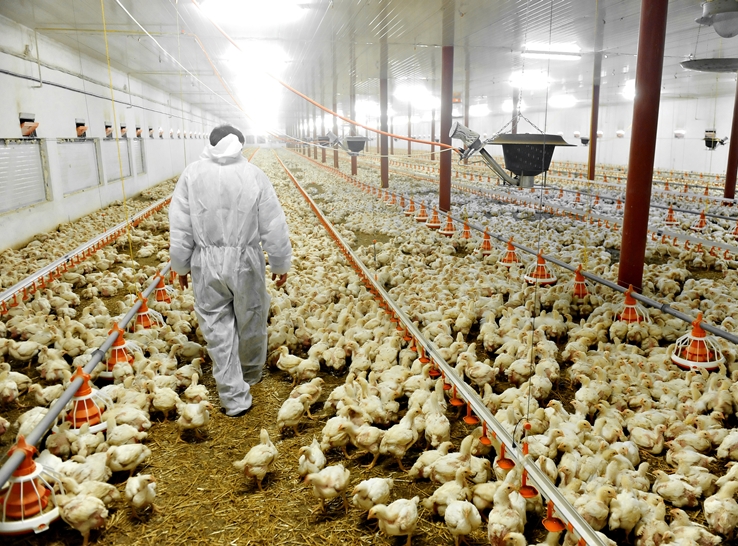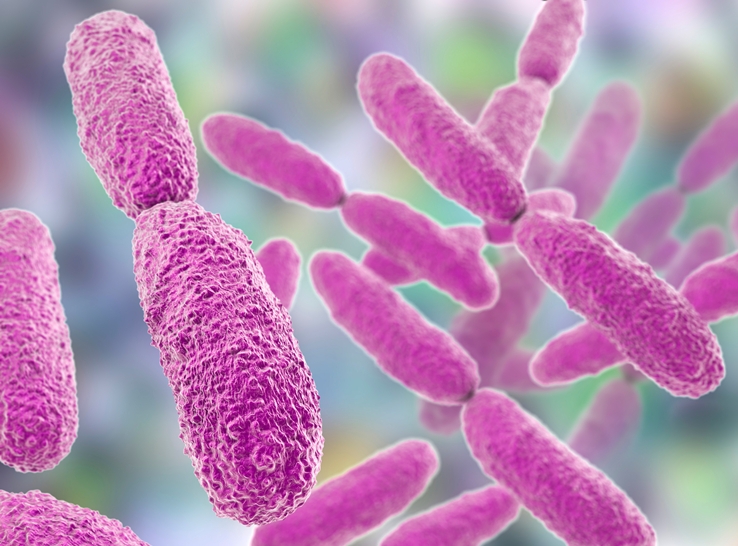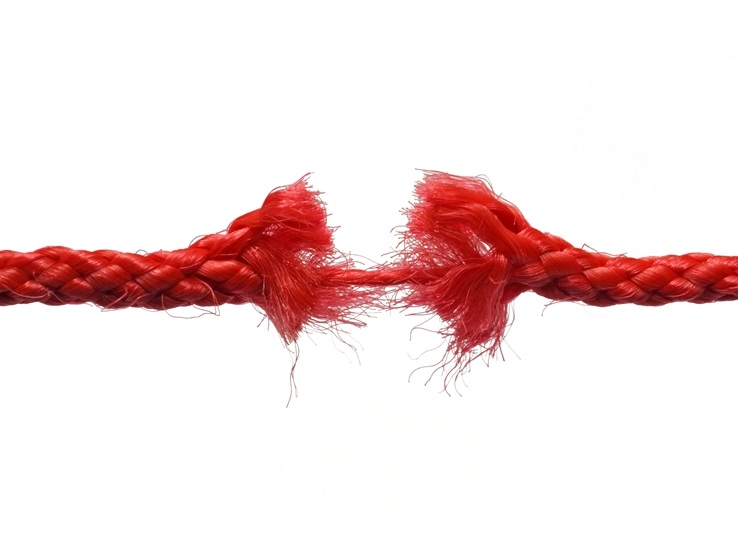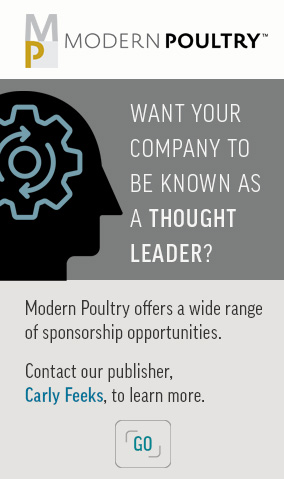Two poultry science association members recently offered practical advice for reducing disease risk in poultry environments.
“I’ve heard that 90% of our problems in poultry houses are management related,” reported Eric Shepherd, Eric Shepherd, DVM, MS, MAM, DACPV, Senior Technical Services Veterinarian, Zoetis. “The other 10% requires a veterinarian. It comes down to the basics that are often overlooked and make disease worse.”
Shepherd and Brian Fairchild, PhD, Extension Poultry Scientist and Professor, University of Georgia Department of Poultry Science, spoke in a webinar sponsored by the Poultry Science Association and American Association of Avian Pathologists.
Highlights of their advice are presented in six tips they gathered while working with poultry farms.
1. Make feed time as easy as possible
Some things, like hunger, are beyond a grower’s control. “We feed-restrict broiler breeders while their genetics make them want to eat,” Shepherd said. “When a feeding is skipped at a pullet or breeder farm, they’re hungry, so don’t make these birds panic looking for food. Try to make feed time as easy as possible.”
He recalled a farm that struggled to fill a long line of pans with feed. Pullets ran around trying to find feed, which had not been distributed to all the pans. As a result, birds piled on each other while trying to eat from pans with feed.
“This company farm consistently had scratched-up pullets with poor uniformity,” Shepherd said. “They were able to make some feeding changes, and the problem was minimized. But even if you fix feeding issues, you may need to coax pullets to go to the end of the line for feed.”
Migration fences should also be used with every broiler flock to spread out birds evenly in houses. “You will get your correct birds per pan and per nipple while also helping airflow,” he added.
Feed-restricted and hungry birds may resort to undesirable practices, like cannibalism. “Some lines of hens will resort to cannibalism if not fed properly. We want them eating feed, not each other,” he said.
A fiber source added to pullet and breeder feed may help reduce hunger and stretch out feeding time, Shepherd suggested.
2. Minimize scratching opportunities
“Any time birds go off feed, they pile on each other at the pans and get scratches,” Shepherd said. “Those scratches really manifest on the broiler side. We end up seeing an inflammatory process and then dermatitis.
“Anytime you have something that encourages scratching, it’s going to make dermatitis very difficult to get rid of,” he added.
3. Watch for calcium tetany issues
Calcium tetany is a feed-related condition that can arise in breeders. The condition is caused by inadequate calcium, leading to muscle weakness and paralysis.
“A typical case of calcium tetany is a 30-week-old breeder flock at peak demand age, and it’s hot outside,” Shepherd said. “Basically, the birds get respiratory alkalosis from panting, which interrupts calcium utilization in these hens. And calcium is not just important for eggshells but also for life functions. It’s a big part of how muscles work.”
Producers can confirm the condition with a rapid blood calcium test.
“The next step should be getting your house cooled down with fans going even before the birds eat,” he continued. “Make sure your water flow keeps up with peak usage. And get those hens fed, watered and off those slats.”
4. Maintain quality litter
“I focus on litter quality because it has such a big impact,” Fairchild reported. “Diet affects litter. We’ve seen little mishaps at a feed mill, where feed may have too much salt in the diet. The excess salt led to very damp bedding from increased moisture in the fecal material.”
Bird health impacts litter quality, especially enteric disease and viral challenges. “An increase in the fecal material can result in higher litter moisture in the house and make it more difficult to maintain the house environment,” he explained.
Bird density also affects litter. Housing is designed with an even distribution of birds throughout it. “If we get 60% of the birds in the front of the house and only 40% at the rear, it’s more competition for food and water space at the front than the rear,” Fairchild added.
Drinker management is also important for litter quality. Keep the drinker-line height adequately raised for birds to reach, he advised. Water pressure also needs to be adjusted according to bird age to meet their demand.
“If water pressure gets too high, then we’ll end up with more water coming out of the drinker than what the beak can hold,” Fairchild said. “The excess water will end up on the floor and will contribute to the moisture load in the house.”
5. Manage litter disease challenges
Previous research examined the impact of litter depth on litter condition and footpad dermatitis. Fairchild said deeper litter produced drier conditions and lower moisture content, which led to better overall footpad scores.
The type of material also affects litter quality. “We looked at different bedding materials, and some are more moisture-absorbent than others,” he explained. “A material like sawdust is pretty absorbent and can hold and release moisture. We can get by with a minimum of 4 inches (10 centimeters) of it for bedding, but 6 inches (15 centimeters) is ideal.
“Using something that’s less absorbent, like rice hulls, needs a deeper base,” he continued. “You should use 5 to 6 inches (13 to 15 centimeters) of bedding to be able to handle the moisture load from birds as they age.” The take-home point is that bedding depth is related to the material and its moisture-holding capacity.
Pullet houses are typically dry and dusty due to their lower density and restricted feed and water. “With less overall moisture going into the litter, poor cocci cycling occurs,” Shepherd said. “In the US, we use restrictive house brooding with a quarter house or a third of a house to get more moisture in the brooding area.”
To help stimulate cocci cycling, most broiler breeders are on a coccidial vaccine, he added.
In the winter, litter tends to become too wet, which leads to health problems ranging from viral infections to Escherichia coli.
“I was told once that a little air goes a long way,” he said. “The best thing to do is get ahead of it and move some air to air it all out.”
6. Focus on relative humidity
Controlling moisture in poultry buildings is important because ammonia is a symptom of high moisture. High litter moisture can lead to many bird health problems.
“We want our ventilation rates to control moisture,” Fairchild said. “In most cases, we recommend focusing on relative humidity and keeping it below 60%. We need to remove the moisture that birds add each day to prevent moisture from building up.”
Fairchild cited research that supports the importance of relative humidity. A study published in 1990 looked at three relative-humidity treatments and the impact on the incidence of birds with twisted legs.
“As the relative humidity increased, so did the incidence of lame birds and footpad dermatitis in those treatments,” he explained. “As more ammonia is produced due to wet litter, the higher concentrations can lead to more susceptibility to respiratory infections.” Relative humidity of 45% produced 6.5% lameness, and 75% relative humidity produced 9.1% lameness.
Other studies reported that higher levels of ammonia increase susceptibility to disease. “Most people understand we now need to keep ammonia levels below 40 parts per million (ppm) or less,” Fairchild said. “A lot of animal welfare guidelines use 25 ppm.
“This is a challenge our growers face because it’s going to cost money, not only on electricity to run fans, but to reheat the air we bring into the house as we remove the ammonia through ventilation,” he noted. “But we know that ammonia is undesirable, and we want to try to control it as best we can.”
Fairchild suggested growers use a free smartphone app called “Poultry411” to help calculate ventilation rates, in order to manage relative humidity in poultry houses.
“If you keep relative humidity below 60%, your air quality is going to be good,” he added. “The drier you want your litter, the lower we want the target relative humidity to be. Relative humidity of 70% or higher will result in damp litter, and 40% or lower is dry litter. Somewhere between 50% and 60% is a moderate level of moisture control.







